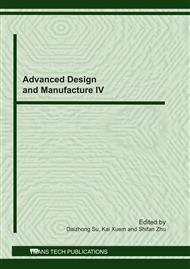p.127
p.131
p.135
p.139
p.143
p.147
p.151
p.155
p.159
Determination of Heavy Metals in Rhizomes of Alpinia galanga by Inductively Coupled Plasma Mass Spectrometry
Abstract:
Galangal (Alpinia galanga (Linn.) Swartz.) is a popular spice in Thailand. Heavy metals, deriving from environmental pollution, might be contaminated in galangal rhizomes. Inductively coupled plasma mass spectrometry (ICP-MS) was a new and fast technique for ultratrace elemental analysis. The aim of this study was to validate a method for the determination of aluminium (Al), arsenic (As), cadmium (Cd), chromium (Cr), copper (Cu), iron (Fe), mercury (Hg), manganese (Mn), nickel (Ni), lead (Pb), and zinc (Zn) in galangal rhizomes according to the European standards (EU) using nitric acid digestion followed by ICP-MS. The parameters evaluated in the validation were recovery, repeatability and within-laboratory reproducibility, limit of detection (LOD), and limit of quantification (LOQ). This method was used to analyze the concentrations of 11 heavy metals in 15 samples of galangal rhizomes collected in Nakhon Pathom province. The metal concentrations varied considerably in the different sample sources. The concentration of heavy metals in the galangal samples arranged in increasing order was Hg < Cd < As < Cr < Pb < Ni < Cu < Zn < Fe < Mn < Al. An acid digestion and ICP-MS method was applicable to determination of 11 heavy metals in galangal rhizomes, based on the recovery analysis, cost, and time taken
Info:
Periodical:
Pages:
143-146
Citation:
Online since:
July 2011
Keywords:
Price:
Сopyright:
© 2011 Trans Tech Publications Ltd. All Rights Reserved
Share:
Citation:


